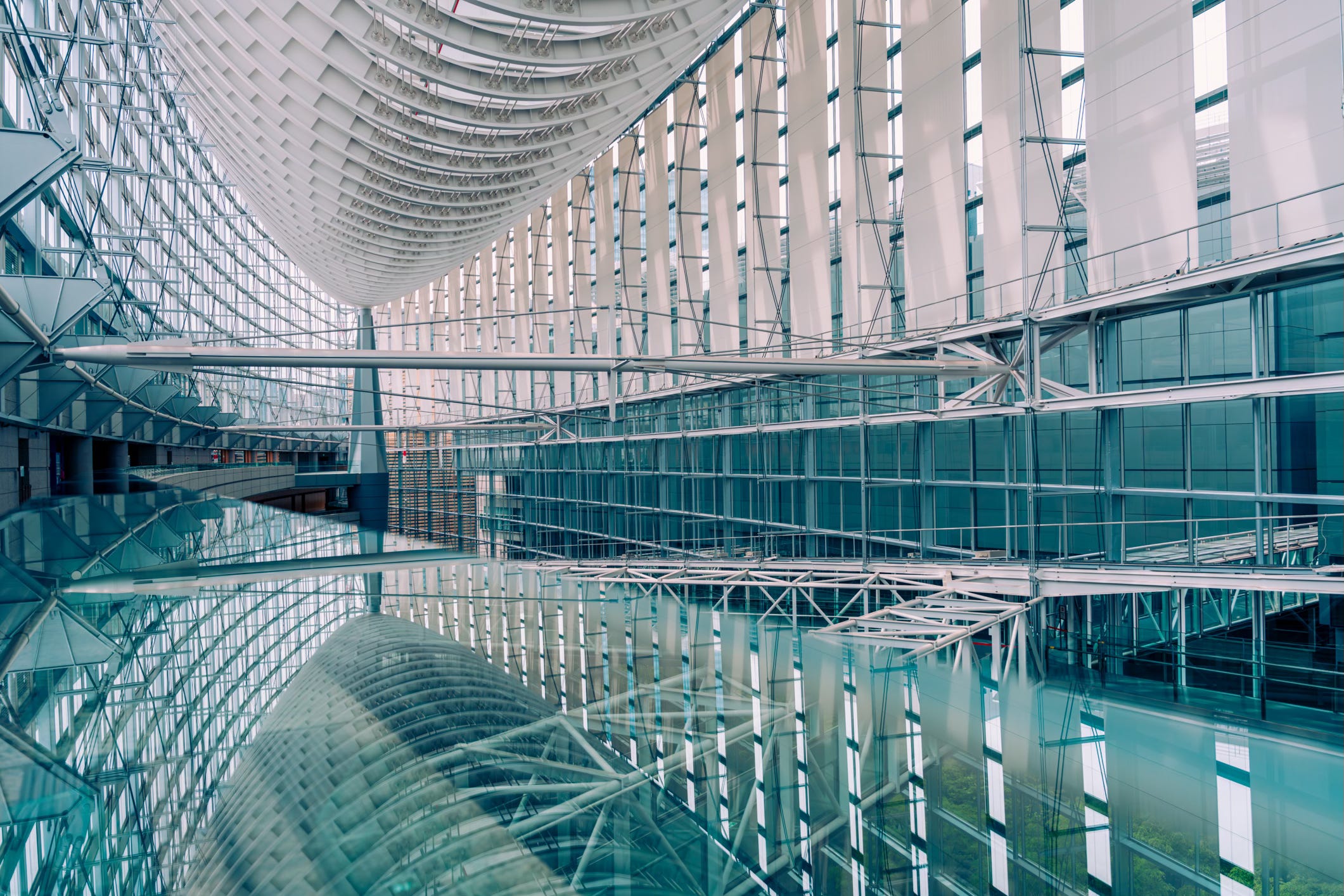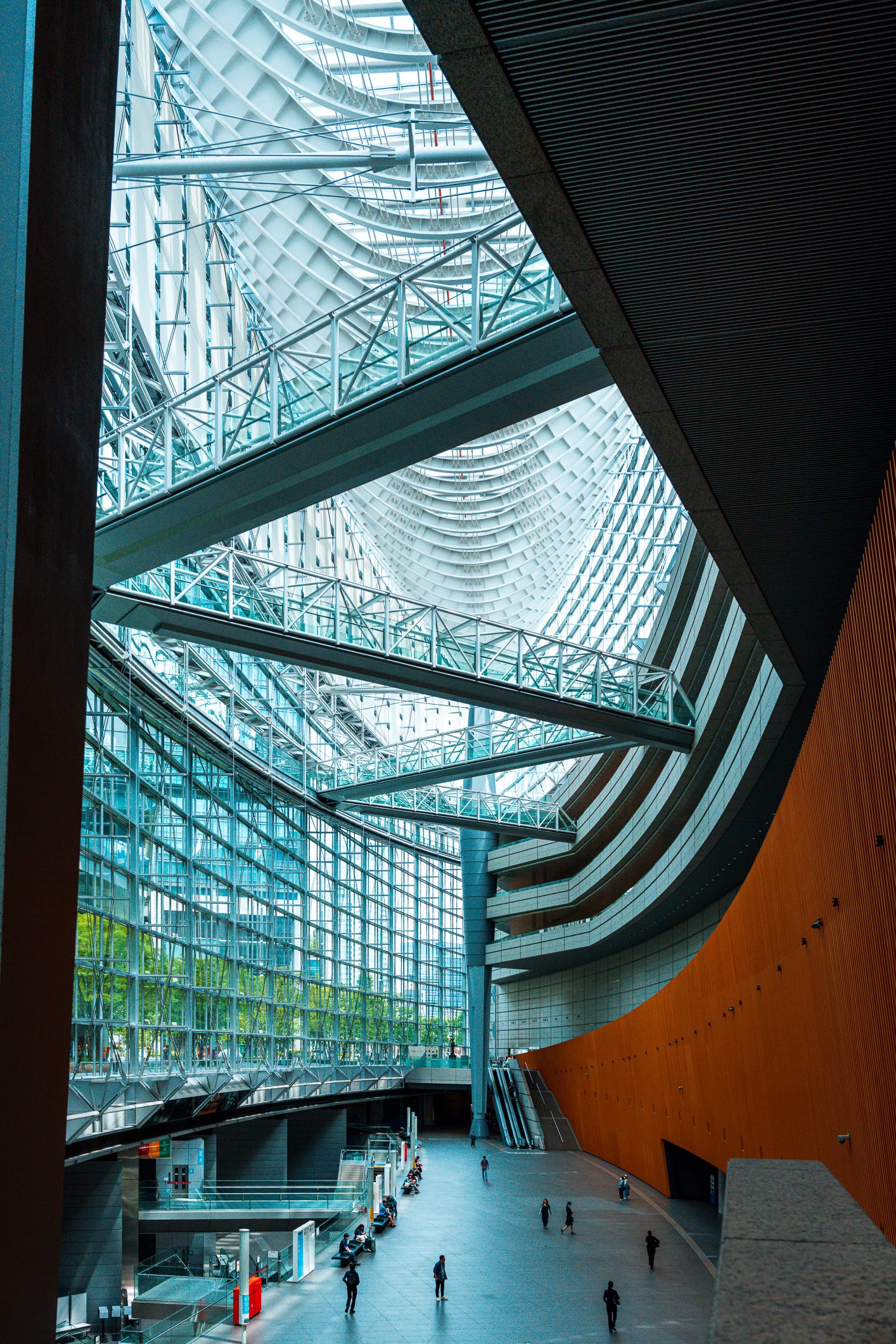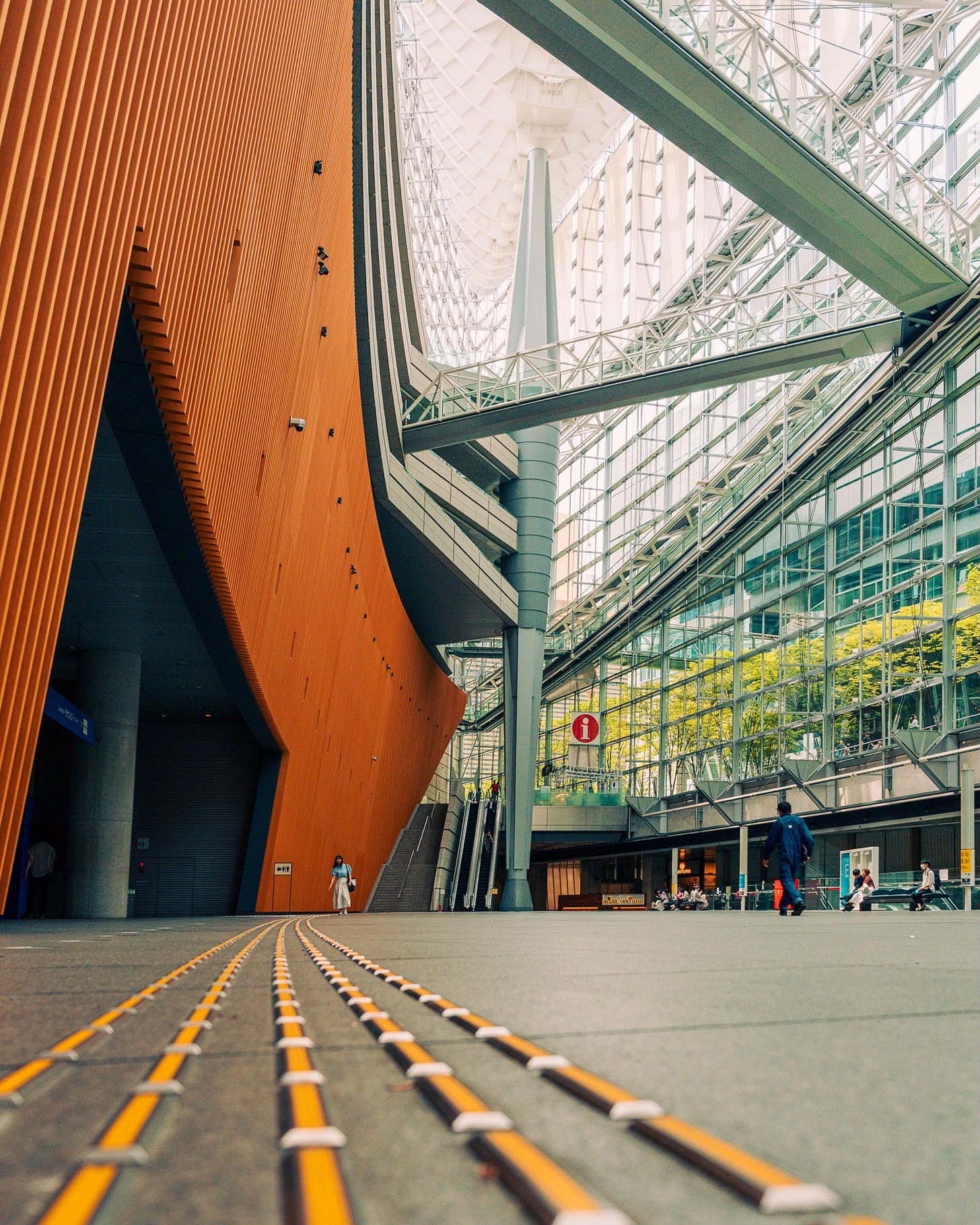
When I visited the Tokyo International Forum, my intention was to capture an almost perfect reflection composition inside this futuristic structure. Although it was built in the 1990s, the building still feels incredibly modern.
The Forum was designed as an exhibition complex with a hall capacity of 5,000. In addition to this, it offers a vast lobby, various restaurants and shops. Located between Tokyo Station and Yurakucho Station, the building was designed by the renowned architect Rafael Viñoly. It stands as a tribute to steel and glass, showcasing sweeping curves and immense spatial volumes that create a unique sense of openness and light.
Reflecting on this shoot, I realised it marked a turning point in how I approach photography while walking through a city. It made me think more carefully about how I want to equip myself and what gear I actually need. For those interested, I generally prefer to travel light when exploring cities during the day. I usually leave my tripod and extra gear at my accommodation unless I am planning a specific early morning or evening shoot. Carrying unnecessary equipment often feels like a burden, especially when I know there is little chance I will use it.
I also try to immerse myself in the experience of being in a new place. I want to enjoy the atmosphere and take in the details of the city, rather than constantly being in photographer mode and always searching for the next composition. It is important to be present and let the city speak for itself.
Most of the time, I carry a small camera with just one lens in a sling bag. This approach keeps me versatile and mobile. However, there have been moments when I wished I had brought a wide-angle lens with me. This is especially true when photographing architecture or interior spaces. My visit to the Tokyo International Forum was one of those occasions.
The area around Tokyo Station consists mostly of offices and retail streets. As you approach the Forum, the structure gradually reveals itself. The bold curve of its façade stands out clearly among the more conventional buildings nearby. Once inside the main entrance, you are greeted by a vast atrium. It feels both open and inviting while being awe-inspiring in scale. Riding the escalator down to the basement level provides a dramatic moment. It gives you a chance to take in the building’s volume and design.

At the basement level, there is a large breakout space designed for conference delegates. On days when no events are taking place, this space is open to the public without any restrictions. Visitors are encouraged to explore, relax, and gather within the building. There are seats throughout, allowing people to pause and reflect on the urban environment surrounding them.

I took time to walk around, gather my thoughts, and appreciate this impressive piece of architecture. Looking up, I was struck by the steel roof structure. It reminded me more of a ship’s hull than a ceiling. Pedestrian walkways cross through the space above, giving it the appearance of a futuristic space station. Capturing the scale and atmosphere of the space proved challenging with the camera I had on hand.

Although I managed to convey some of the structure’s essence, I realised a wide-angle lens would have helped portray the grandeur and openness much more effectively. One reason I visited the Forum was to photograph a glass balustrade on the top floor. This feature provides a near-perfect reflection of the ceiling, creating the kind of symmetrical composition I enjoy. Since it was a weekday, the space was relatively quiet and I found the spot with ease.

Still, I have to admit that the photograph fell short of my expectations. The composition felt too tight and did not fully capture the dramatic roof structure or its reflection. The overcast sky did not help either, as it prevented any sunlight from casting interesting shadows or highlights across the space. If I had visited a few hours later, the artificial lighting might have created a different atmosphere. Perhaps this gives me a reason to return and try again.
What stood out to me during my visit was the number of people using the building as a social space. Some were meeting friends, others were reading or simply resting. Although the atrium is clearly a privately owned space, the owners have embraced the idea of it being a semi-public place. This aligns with what urban planners describe as a Third Space. These are locations where the original purpose is expanded to allow for informal public use.
We are becoming increasingly aware of the value of such spaces in our cities. Whether it is the lobby of a museum, a hotel atrium, or a gallery entrance, these areas add another layer of ‘public’ life to the urban experience. The Forum offers plenty of benches and I did not notice any security presence asking people to move along or preventing photography. Instead, the building invites people to make use of its facilities. The cafés and restaurants were busy and well-used by both locals and visitors. I saw people happily sitting alone with a book, enjoying the atmosphere of this cathedral-like space and creating their own sense of calm in the city.
Do you have a favourite Third Space in your city? Or have you visited one elsewhere that left a strong impression on you? I would love to hear about it. Please feel free to share your thoughts and recommendations.



